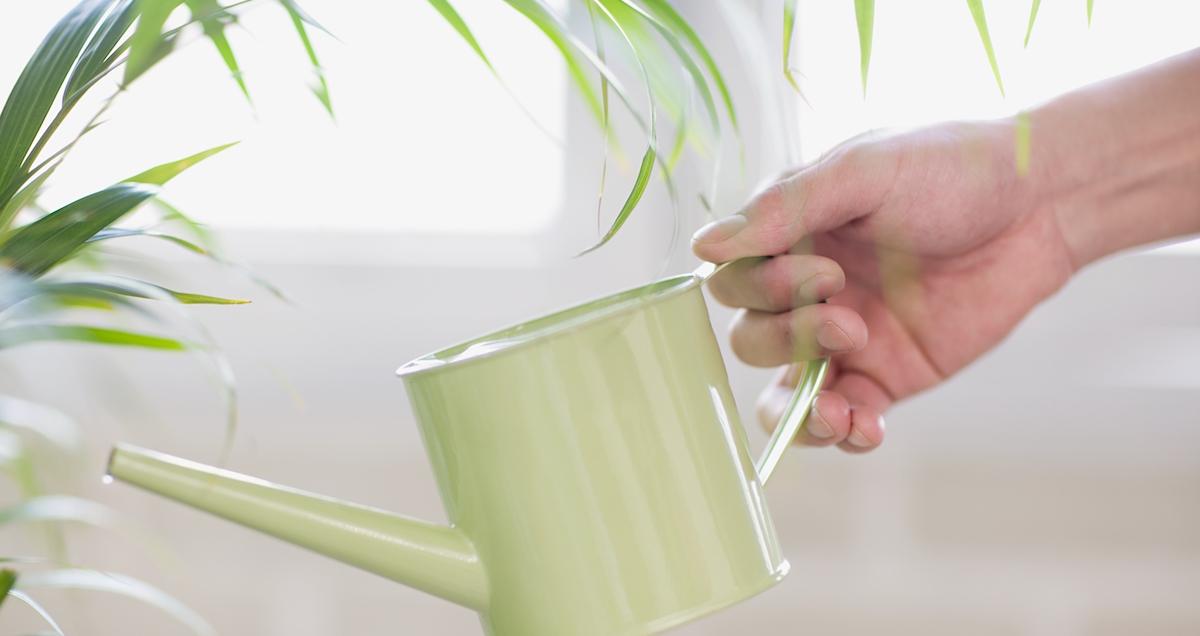Why Your Spider Plant Is Turning Brown, and How to Bring It Back to Life
Published Feb. 23 2021, 2:23 p.m. ET

Spider plants are some of the most common houseplants in the world. They are appealing to look at, easy to grow, easy to propagate, and best of all, easy to care for. Still, even the most green-thumbed home gardeners can run into issues now and then with the notoriously hearty houseplants. Any spider plant parent might find themselves wondering why their spider plant is turning brown, and luckily, we have solutions.

Why is your spider plant turning brown?
Spider plants are so popular because they're able to thrive in some of the most sub-optimal growing conditions. They can grow and sprout spiderlings and flowers — even in indirect sunlight — but their prodigious propagation can often be hindered by the appearance of dead-looking black or brown leaves.
There are several reasons why one of these plants might start turning brown, and while those reasons rarely have to do with sunlight — something that most plants require as a necessity. They can be caused by water quality, over or underwatering, and even some rare plant diseases.
How you know if you're overwatering or underwatering:
According to Dengarden, spider plants are quite susceptible to water stress. Over and underwatering your plant can both cause leaf tips to brown, and overwatering can lead to other more serious issues. Excess water can cause root rot, which stops the flow of water and nutrients into the plant.
Underwatering, however, will cause the plant to dry out over time, which will make the leaves appear yellow, then brown, and finally black. Oftentimes, the potting soil or the pot's draining holes may be causing root rot — try changing out the potting mix or switching the plant to a new pot with better drainage.
If your plant is overwatered and root rot has set in, however, remove the afflicted roots and hope for the best. Removing the rotted roots is the only chance your spider plant has at surviving. If the problem isn’t corrected, the plant could face imminent death.
The fluoride in your water may be an issue.
According to Epic Gardening, browning can be caused not only by extra water, but also by compounds found in your tap water. Excess fluoride in your water can be extremely toxic to houseplants because it builds up inside the plant and inhibits the natural photosynthetic process. Fluoride has also been known to damage plant tissue, which also results in browning.
If you suspect your water has too much fluoride, flush the spider plant’s soil out with distilled water a few times and let it drain. Once your plant is clean and ready for more water, try using rainwater or distilled water for future waterings. Note that soil with high calcium levels can also be used to prevent potential fluoride toxicity in houseplants.
Humidity check!
Spider plants might seem strong, but they have needs just like the rest of us. According to Epic Gardening, spider plants thrive and blossom under high levels of humidity. Low humidity will not only impede growth, but it might also start browning the leaves as surely as the sun.
Spider plants are most susceptible to succumbing to lack of humidity in wintertime when the air is dry, or in the summer when there is more heat in the air. You can keep the humidity level high by water in a timely manner, grouping your spider plants with other houseplants, or misting them at regular intervals when the air is driest.
Your plant may be suffering from disease.
According to Gardening Know How, spider plants can contract diseases besides root rot such as fungi, bacteria, and other plant pathogens. Therefore, it’s important to choosing your potting soil wisely. You may be tempted to take it from outside, but you never know what little buggers might be lurking within.
If you suspect your plant is afflicted with a disease, fungus, or blight, try repotting it. If that doesn’t work, you may need to contact a gardening expert or go searching for anti-fungal sprays for your houseplants. You could also cut away the blight just as you would with the root rot and see if it works.
Too much sun is possible.
Spider plants usually only need a little sunlight to thrive, and too much sun can cause them to dry out. According to Epic Gardening, this usually only affects spider plants that are planted outdoors. Indoor plants simply need indirect or filtered sunlight. As long as they aren’t right in the light, they will be happy and healthy in the shade.
I once had a friend tell me that the cutting of the spider plant he had given me was completely “unkillable.” He assured me that even someone with a thumb as woefully blighted as my own could not possibly mess up a plant that had been in his family for at least a generation. Turns out he was very nearly wrong. Luckily for me, and that spider plant, I knew exactly what to do when my spider plant’s leaves went brown — and now so do you.